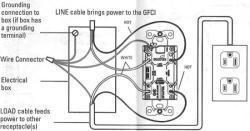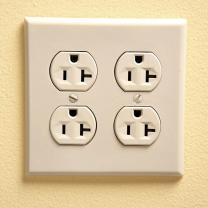What is the best hand saw for cutting wood?
The ideal hand saw for cutting wood depends on the specific type of woodwork you're doing and your personal preferences. There are several types of hand saws designed for various purposes. Here are some common types of hand saws used for cutting wood, along with their best-suited applications:
Crosscut Saw:
- Best for: Cutting wood across the grain.
- Features: Has sharp teeth designed to make clean cuts across the wood fibers.
- Variations: Traditional crosscut saws and modern versions are available.
Rip Saw:
- Best for: Cutting wood along the grain.
- Features: Has fewer teeth compared to crosscut saws, with teeth designed to remove wood along the grain effectively.
Panel Saw:
- Best for: Cutting large sheets or panels of wood, such as plywood.
- Features: Has a longer blade and fine teeth for making precise and straight cuts.
Backsaw:
- Best for: Precise and fine woodworking, such as joinery and cabinetry.
- Features: Has a stiff back and fine teeth for accuracy and clean cuts. Examples include tenon saws and dovetail saws.
Coping Saw:
- Best for: Intricate and curved cuts in wood.
- Features: Has a thin blade that can be rotated in the frame, allowing for tight turns and intricate cuts.
Japanese Pull Saw:
- Best for: Various woodworking tasks, including joinery, dovetailing, and fine cuts.
- Features: Has a thin, flexible blade with teeth designed for clean cuts and the ability to cut on the pull stroke.
Bow Saw:
- Best for: Cutting thicker branches, logs, or irregular-shaped wood.
- Features: Has a large, wide blade and is suitable for outdoor or rough cutting tasks.
Hacksaw:
- Best for: Cutting metal, plastic, or thin wood.
- Features: A fine-toothed saw with a C-shaped frame, primarily used for metalworking.
When choosing a hand saw for wood cutting, consider the following factors:
Type of Wood and Cutting Task: Different woods and tasks may require specific saws. Choose the saw that best matches your intended use.
Tooth Count: The number of teeth per inch (TPI) affects the saw's cutting speed and finish. Higher TPI results in smoother but slower cuts, while lower TPI allows for faster, rougher cuts.
Comfort and Grip: A comfortable handle and good grip are essential for control and reduced hand fatigue during extended use.
Blade Length: Select a blade length appropriate for your cutting needs. Longer blades are useful for larger cuts, while shorter blades offer better control for precision work.
Quality: Invest in a high-quality hand saw with sharp, well-maintained teeth for efficient and safe cutting.
Ultimately, the best hand saw for cutting wood depends on your specific woodworking tasks and preferences. It's a good idea to have a selection of saws for different purposes, as each excels in specific applications.
Woodworking Essentials: Choosing the Best Hand Saw for Precision Cuts
When choosing a hand saw for precision cuts, there are a few key factors to consider:
- Blade length: The length of the blade will determine the depth of the cut you can make. For precision cuts, a shorter blade is generally better, as it will give you more control.
- Teeth per inch (TPI): The TPI of the blade determines how fine or coarse the cut will be. A higher TPI will produce a finer cut, which is ideal for precision work.
- Blade material: The blade material is another important factor to consider. High-carbon steel blades are more durable, but they can be more difficult to sharpen. Japanese-style saws often use thinner, more flexible blades that are easier to sharpen.
Hand Saw Selection Guide: Finding the Perfect Tool for Wood Cutting
Here is a guide to some of the best hand saws for precision cuts:
- Japanese saws: Japanese saws are known for their thin, sharp blades and precise cuts. They are available in a variety of styles, including the ryoba saw (which has two blades, one for crosscuts and one for rip cuts) and the dozuki saw (which is a fine-tooth saw for crosscuts).
- Back saws: Back saws are designed for making fine crosscuts in wood. They have a stiff blade with small teeth that produce a smooth finish.
- Coping saws: Coping saws are small saws with a U-shaped frame. They are used for making intricate cuts in wood, such as dovetails and scrolls.
Sawing with Precision: Top Hand Saws for Woodworking
Here are some tips for sawing with precision using a hand saw:
- Use a sharp saw. A dull saw will be more difficult to control and will produce a rougher cut.
- Mark your cut carefully. Use a pencil and a square to mark the exact line where you want to cut.
- Hold the saw firmly. Use both hands to hold the saw and guide it along the cut line.
- Apply light pressure. Don't press too hard on the saw, or you will risk losing control.
- Saw slowly and carefully. It's better to take your time and make a precise cut than to rush and make a mistake.
If you are new to woodworking, it is a good idea to practice sawing on scrap wood before trying to make cuts on your project. With a little practice, you will be able to make precise cuts with a hand saw like a pro.













